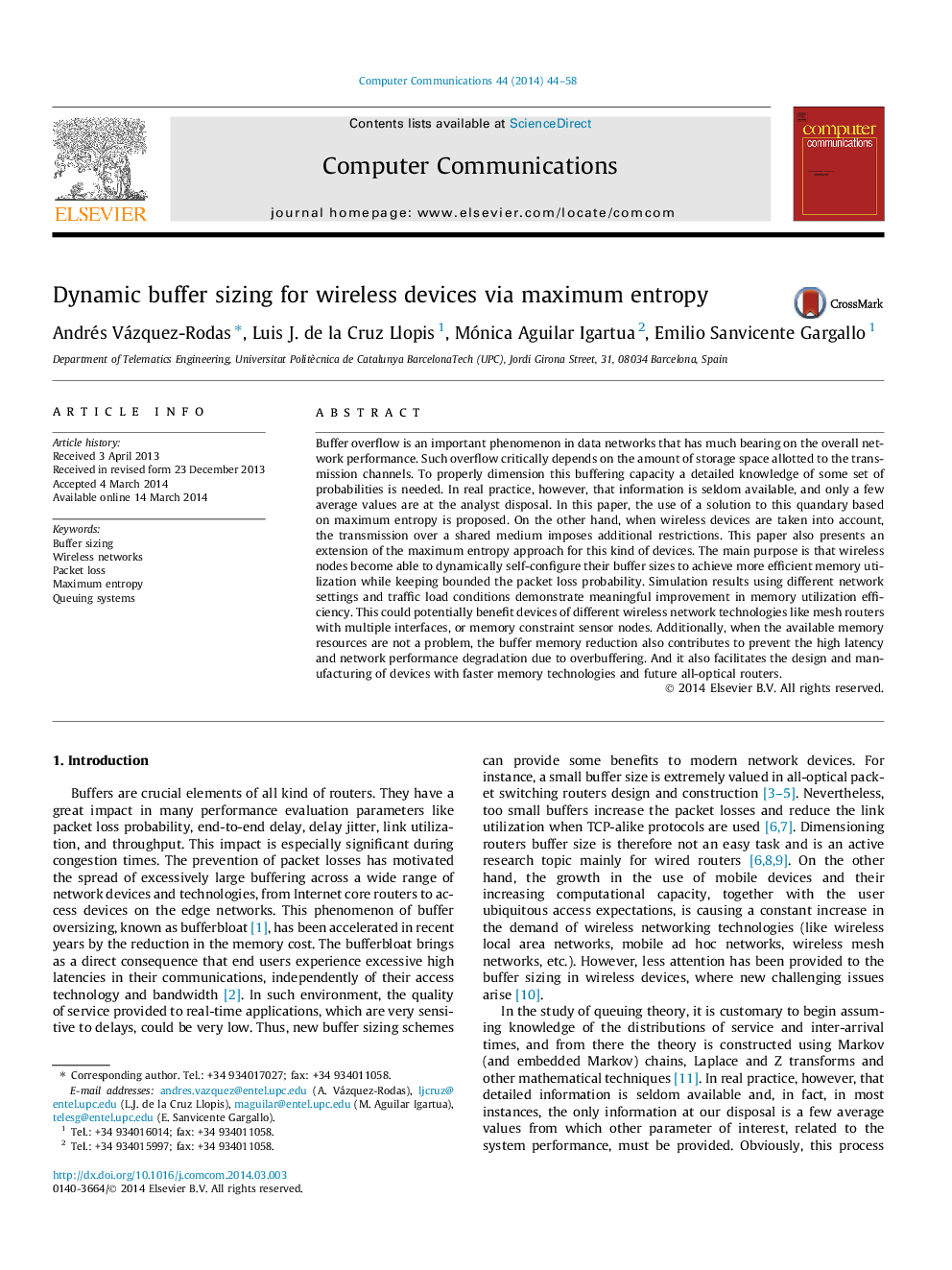| Article ID | Journal | Published Year | Pages | File Type |
|---|---|---|---|---|
| 447873 | Computer Communications | 2014 | 15 Pages |
Buffer overflow is an important phenomenon in data networks that has much bearing on the overall network performance. Such overflow critically depends on the amount of storage space allotted to the transmission channels. To properly dimension this buffering capacity a detailed knowledge of some set of probabilities is needed. In real practice, however, that information is seldom available, and only a few average values are at the analyst disposal. In this paper, the use of a solution to this quandary based on maximum entropy is proposed. On the other hand, when wireless devices are taken into account, the transmission over a shared medium imposes additional restrictions. This paper also presents an extension of the maximum entropy approach for this kind of devices. The main purpose is that wireless nodes become able to dynamically self-configure their buffer sizes to achieve more efficient memory utilization while keeping bounded the packet loss probability. Simulation results using different network settings and traffic load conditions demonstrate meaningful improvement in memory utilization efficiency. This could potentially benefit devices of different wireless network technologies like mesh routers with multiple interfaces, or memory constraint sensor nodes. Additionally, when the available memory resources are not a problem, the buffer memory reduction also contributes to prevent the high latency and network performance degradation due to overbuffering. And it also facilitates the design and manufacturing of devices with faster memory technologies and future all-optical routers.
